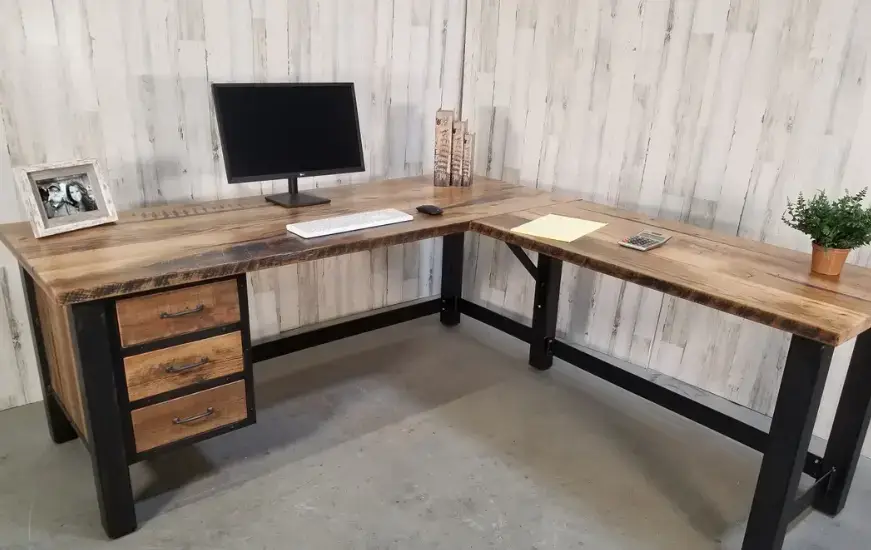The Origin and Evolution of Wood Office Desks

The history of wood office desks dates back centuries, evolving in tandem with changes in office culture, design trends, and technological advancements. The concept of a workspace dedicated to reading, writing, and conducting administrative tasks can be traced to medieval times when clerks and scribes used simple wooden tables as their workstations.
However, the modern concept of the wood office desk as we know it today began to take shape during the Renaissance period. With the rise of bureaucracy and administrative duties, the need for organized workspaces became more pronounced. The earliest wooden office desks were simple, functional pieces with straight lines and minimal embellishments, designed to facilitate paperwork and correspondence.
As industrialization gained momentum, the demand for office furniture surged. Woodworkers and craftsmen started to experiment with designs that integrated storage compartments, drawers, and compartments, providing professionals with efficient spaces to manage documents and tools. The late 19th and early 20th centuries witnessed the emergence of ornate wooden office desks, often featuring intricate carvings and decorative elements.
With the advent of modernism in the mid-20th century, the design of wood office desks underwent a transformation. Clean lines, minimalist aesthetics, and functional forms became prominent features. The introduction of metal and other materials in desk construction allowed for innovative designs that combined the elegance of wood with the sleekness of modern materials.
In recent decades, wood office desks have continued to evolve in response to changing work habits and technology. Ergonomics has taken center stage, influencing desk designs to promote better posture and comfort during long work hours. Cable management systems have been integrated to accommodate computers, telephones, and other electronic devices.
Today, wood office desks come in a diverse array of styles, catering to various office aesthetics and individual preferences. With an emphasis on functionality, aesthetics, and adaptability, wood office desks are now equipped to meet the demands of contemporary work environments, ranging from open offices to remote work setups.
The journey of wood office desks has mirrored the ever-changing landscape of work. As workstyles shifted from traditional clerical tasks to more collaborative and technology-driven endeavors, the design of these desks adapted accordingly. The rise of open office concepts and flexible work arrangements brought about the need for versatile desks that could accommodate various tasks, from focused work to group discussions.
Contemporary wood office desks are a testament to the fusion of classic craftsmanship and modern ingenuity. They incorporate innovative features such as adjustable heights, integrated charging stations, and ergonomic considerations that cater to the demands of a dynamic work environment. This evolution reflects a profound understanding of how these desks have transitioned from mere functional pieces to influential components that contribute to employee well-being, productivity, and the overall aesthetics of the workspace. The continued relevance and popularity of wood office desks highlight their enduring capacity to adapt and enhance the work experience, maintaining their position as essential elements in the ever-evolving world of office design.
In conclusion, the history of wood office desks reflects the evolution of office culture, design, and technology. From their humble origins as basic work surfaces to their current status as functional and aesthetically pleasing pieces, wood office desks continue to serve as essential components of modern workspaces, embodying the balance between tradition and innovation.
